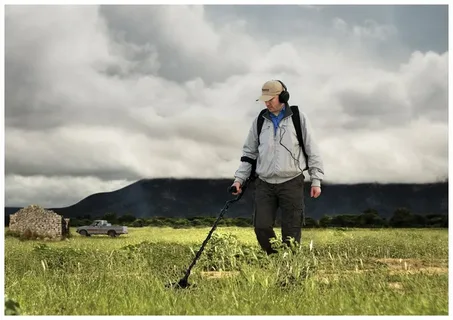Gold mining in the world has long been a lucrative venture, with the demand for this precious metal continuing to rise. As a result, many top gold mining sites have become renowned for their vast reserves and high-quality gold production. In this article, we will be exploring some of the top gold mining sites around the world, uncovering the incredible wealth and technological advancements that have made these locations synonymous with gold mining. From the deep mines of South Africa to the modern operations in Australia and the historical sites in the United States, we will take a closer look at the diverse and fascinating world of gold mining.
Exploring the top gold mining sites around the world can provide valuable insight into the global gold industry. Some of the most significant gold mining sites include the Witwatersrand basin in South Africa, known for its extensive gold deposits. In addition, the Carlin Trend in Nevada has been a major producer of gold in the United States. Other important gold mining sites include Muruntau in Uzbekistan, Grasberg in Indonesia, and Yanacocha in Peru. Visiting these sites can offer a firsthand look at the technology, infrastructure, and environmental impact of gold mining on a global scale.
The Impact of Gold Mining on Global Economies and Environments

The impact of gold mining on global economies and environments is significant. On one hand, gold mining has the potential to contribute positively to the economy by creating jobs, generating revenue, and supporting local businesses. However, it also has negative consequences, including environmental degradation, deforestation, water pollution, and displacement of communities. Additionally, gold mining can contribute to social and political unrest in some regions. The use of toxic chemicals such as cyanide in the extraction process further exacerbates environmental pollution. Overall, the impact of gold mining on global economies and environments is complex and multifaceted, requiring careful consideration of both the benefits and drawbacks.
Challenges and Opportunities in Modern-Day Gold Mining

Challenges in modern-day gold mining include environmental concerns, such as the impact of mining operations on local ecosystems and water resources. Additionally, labor issues and community relations can pose challenges for mining companies. On the other hand, opportunities in modern-day gold mining include technological advancements that can improve efficiency and reduce environmental impact. The high demand for gold in jewelry, technology, and investment also presents significant opportunities for the industry. Lastly, the potential for exploration in new, untapped areas provides opportunities for growth in the gold mining sector.
Exploring the History and Future of Gold Mining Worldwide

Exploring the history and future of gold mining worldwide involves delving into the rich historical significance of gold as a valuable commodity and its impact on global economies. Examining the methods, technologies, and labor practices used in gold mining throughout history provides insights into how the industry has evolved and the various social and environmental issues it has faced.
Additionally, exploring the future of gold mining involves considering factors such as sustainable practices, technological advancements, and the potential impact of shifting global economic and political dynamics on the industry. Understanding these aspects can provide valuable perspectives on the trajectory of gold mining worldwide.
The Role of Technology in Advancing Gold Mining Practices

Technology plays a critical role in advancing gold mining practices by increasing efficiency, safety, and environmental sustainability. Some of the key technological advancements in gold mining include the use of advanced geospatial mapping and surveying tools to identify potential gold deposits, the implementation of automated equipment and machinery to improve productivity and reduce operational risks, and the adoption of innovative extraction and processing techniques to minimize the environmental impact of mining activities. Additionally, the integration of data analytics and remote monitoring technologies has enabled companies to make more informed decisions and optimize their operations in real-time. Overall, technology has significantly contributed to the evolution of gold mining practices, making it a more sustainable and cost-effective industry.
Sustainable Practices in the Gold Mining Industry: A Global Perspective
“Sustainable Practices in the Gold Mining Industry: A Global Perspective” is a comprehensive look at the efforts being made within the gold mining industry to minimize environmental impact, promote responsible resource management, and improve local community relations. The report examines case studies from various gold mining regions around the world to highlight best practices and identify areas for improvement. It also delves into the role of regulatory bodies and international organizations in promoting sustainability within the industry. The report provides valuable insights for industry stakeholders, policymakers, and environmental advocates seeking to promote sustainable development in gold mining.
Emerging Trends in Gold Mining: A Look at Global Markets
The global gold mining industry is experiencing a number of emerging trends that are shaping the market. One of the biggest trends is the increasing adoption of technology and automation in gold mining operations. This includes the use of advanced machinery and equipment, as well as the implementation of data analytics and machine learning to improve efficiency and productivity.
Another important trend is the focus on sustainable and responsible mining practices. As environmental and social concerns become more prominent, gold mining companies are under increasing pressure to minimize their impact on the environment and local communities. This includes reducing water and energy consumption, minimizing waste, and improving safety standards.
Furthermore, there is a growing interest in exploring new and untapped gold reserves in emerging markets, particularly in regions such as Latin America, Africa, and Asia. This has led to increased investment in exploration and development projects in these areas, as well as the establishment of partnerships and joint ventures with local mining companies.
In addition, the increasing volatility and uncertainty in the global economy have also had a significant impact on the gold mining industry. As a traditional safe-haven asset, the demand for gold has been on the rise, leading to increased investment in gold mining projects and expansion of production capacities.
Overall, these emerging trends in the global gold mining industry are expected to continue shaping the market in the coming years, as companies strive to adapt to the changing landscape and meet the growing demand for gold.
The Social and Cultural Impacts of Gold Mining Around the World
Gold mining has significant social and cultural impacts around the world. It can lead to the displacement of local communities, as well as the destruction of traditional livelihoods and cultural practices. It can also result in environmental degradation, including water and soil pollution, which can have negative impacts on local communities and indigenous peoples.
In addition, gold mining can contribute to social and political conflict, as different stakeholders compete for control over valuable resources. This can lead to human rights abuses, including violence and forced labor.
On the positive side, gold mining can also bring economic opportunities to local communities, providing jobs and income. However, these benefits are often accompanied by social and environmental costs, and can exacerbate existing inequalities and injustices.
Overall, the social and cultural impacts of gold mining are complex and multifaceted, and require careful consideration and management by all stakeholders involved.
Gold Mining and Indigenous Communities: A Global Perspective
Gold mining and its impact on indigenous communities is a global issue that has been a long-standing concern. The extraction of gold often occurs within or near indigenous lands, leading to significant social, economic, and environmental consequences for these communities.
In many cases, indigenous communities have experienced displacement from their traditional lands, loss of access to clean water and natural resources, and destruction of sacred sites due to gold mining activities. Additionally, the influx of miners and mining infrastructure has led to social problems such as substance abuse, increased violence, and the spread of diseases within these communities.
Furthermore, the environmental impacts of gold mining, such as deforestation, soil and water contamination, and disruption of ecosystems, have significant repercussions for indigenous peoples who rely on the land and natural resources for their livelihoods and cultural practices.
Global initiatives and advocacy efforts have sought to address these systemic issues, promoting sustainable and responsible mining practices that respect the rights and well-being of indigenous communities. Collaboration between mining companies, governments, and indigenous representatives is essential in ensuring that gold mining activities do not result in further marginalization and harm to these communities.
Global Regulations and Policies Shaping the Gold Mining Industry
Global regulations and policies that shape the gold mining industry include environmental standards, labor regulations, and tax laws. These regulations are designed to minimize the environmental impact of mining operations, ensure the safety and fair treatment of workers, and regulate the extraction and sale of gold to ensure that governments receive their fair share of economic benefits. Additionally, international agreements such as the Kimberley Process Certification Scheme aim to prevent the trade of conflict or blood diamonds, which can also apply to gold mining. These regulations and policies can vary by country and region, but they collectively influence the operational and financial aspects of the gold mining industry on a global scale.
Investing in Gold Mining: Opportunities and Risks in Global Markets
See also: gold mining machinery
Investing in gold mining can provide significant opportunities for investors to capitalize on the demand for gold in global markets. Gold is considered a safe haven asset and is often sought after during times of economic uncertainty, making it an attractive investment option for many investors.
One of the primary opportunities of investing in gold mining is the potential for high returns. As the price of gold increases, so does the value of gold mining companies, which can lead to substantial profits for investors.
However, there are also several risks associated with investing in gold mining. These include the volatility of the gold market, which can result in fluctuations in the value of gold mining stocks. Additionally, there are environmental and geopolitical risks that can impact the operations of gold mining companies.
When considering investing in gold mining, it’s important for investors to conduct thorough research and due diligence to understand the specific opportunities and risks associated with their investment. This may involve analyzing the financial performance of gold mining companies, evaluating the potential for future gold price movements, and assessing the geopolitical and environmental factors that could impact the industry.